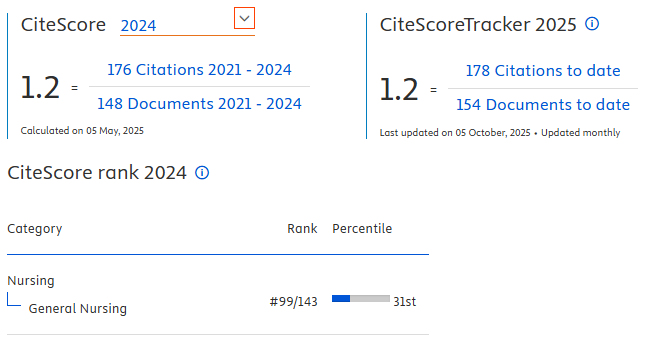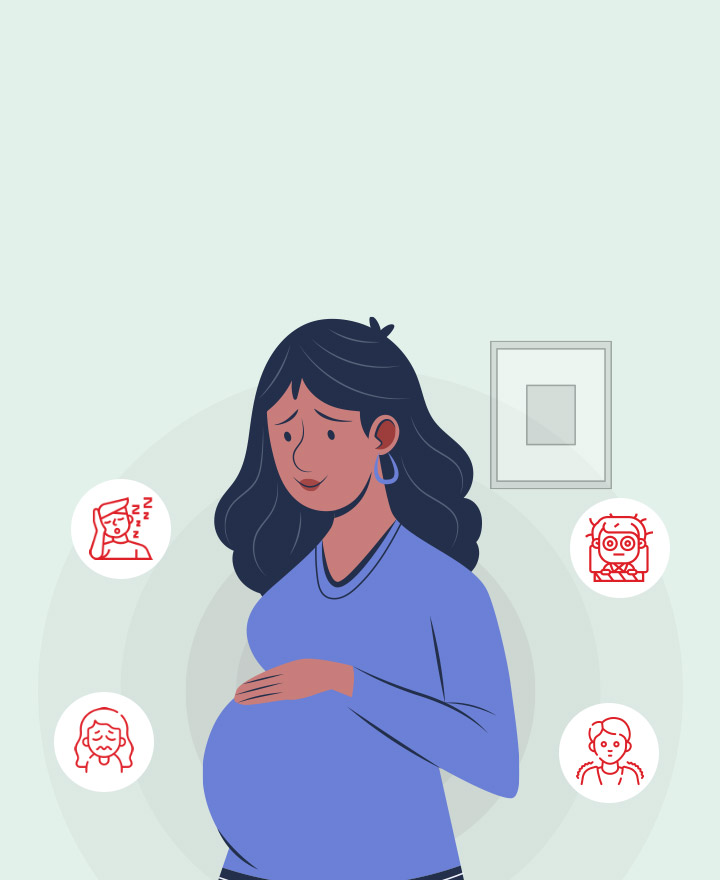Differences Between NRS-2002 and MUST in Relation to the Metabolic Condition of Trauma Patients
Downloads
Introduction: Flow phase with high cardiac output and increased metabolic conditions. When metabolic conditions are not stable there will be a long duration of complications until death. One of the benefits of Nutrition Risk Screening (NRS-2002) is reliable inpatient care for critical patients. While the Malnutrition Universal Screening Tool (MUST) shows speed in the classification of nutritional disorders.
Methods: This study used the observational design method. The sampling technique in this study used Consecutive sampling in accordance with the criteria consisting of 31 respondents. This was to determine the specificity and sensitivity values of NRS 2002 and MUST using contingency table analysis and for the Area Under Curve (AUC) using Receiver Operating Characteristic (ROC) curve analysis.
Results: The sensitivity values in MUST was predicted for metabolic conditions which was higher than when using NRS 2002, but the specificity and value of AUC (Area Under Curve) was higher using NRS 2002 than using MUST when it came to predicting metabolic conditions.
Conclusions: There were differences in effectiveness between use of Nutritional Risk Screening (NRS-2002) with the Malnutrition Universal Screening Tool (MUST) in relation to changes in metabolic conditions of trauma patients. NRS-2002 is more effective than MUST. NRS 2002 has the ability to identify patients more precisely who are likely to have a negative outcome.
Al Kalaldeh, M., & Shahin, M. (2014). Nurses' knowledge and responsibility toward nutritional assessment for patients in intensive care units. Journal of Health Sciences, 4(2), 90. Retrieved from http://ezproxy.stir.ac.uk/login?url=http://search.ebscohost.com/login.aspx?direct=true&db=edb&AN=100323167&site=eds-live
Ansari, M. R., Susetyowati, & Pramantara, I. (2014). Uji validitas skrining status gizi NRS 2002 dengan asesmen biokimia untuk mendeteksi risiko malnutrition di RSUP dr. Sardjito yogyakarta. Gizi Indon, 37((1)), 1–12.
Barendregt, K., P.B. Soeters, S.P. Allison and J.Kondrup, 2008. Basic concepts in nutrition: Diagnosis of malnutrition: Screening and assessment. e-SPEN, E. Spen. Eur. E. J. Clin. Nutr. Metab., 3: 121-125.
Chen, Z. Y., Gao, C., Ye, T., Zuo, X. Z., Wang, G. H., Xu, X. S., & Yao, Y. (2015). Association between nutritional risk and routine clinical laboratory measurements and adverse outcomes: A prospective study in hospitalized patients of wuhan tongji hospital. European Journal of Clinical Nutrition, 69(5), 552–557. https://doi.org/10.1038/ejcn.2014.239
Jayawardena, R., Lokunarangoda, N. C., Ranathunga, I., Santharaj, W. S., Walawwatta, A. O., & Pathirana, A. K. (2016). Predicting clinical outcome of cardiac patients by six malnutrition screening tools. BMC Nutrition, 2(1), 5. https://doi.org/10.1186/s40795-016-0044-z
Kondrup, J., Allison, S. P., Elia, M., Vellas, B., & Plauth, M. (2003). ESPEN guidelines for nutrition screening 2002. Clinical Nutrition, 22(4), 415–421. https://doi.org/10.1016/S0261-5614(03)00098-0
Kuppinger, D., Hartl, W. H., Bertok, M., Hoffmann, J. M., Cederbaum, J., Bender, A., ... Rittler, P. (2013). Nutritional screening for risk prediction in patients scheduled for extra-abdominal surgery. Nutrition, 29(2), 399–404. https://doi.org/10.1016/j.nut.2012.06.013
Lee, J. O., Benjamin, D., & Herndon, D. N. (2005). Nutrition Support Strategies for Severely Burned Patients. Nutricion on Clinical Practice, 20(June), 325–330.
Leuenberger, M., Kurmann, S. & Stanga, Z. Support Care Cancer (2010) 18(Suppl 2): 17. https://doi.org/10.1007/s00520-009-0805-1
Lomivorotov, V. V., Efremov, S. M., Boboshko, V. A., Nikolaev, D. A., Vedernikov, P. E., Lomivorotov, V. N., & Karaskov, A. M. (2013). Evaluation of nutritional screening tools for patients scheduled for cardiac surgery. Nutrition, 29(2), 436–442. https://doi.org/10.1016/j.nut.2012.08.006
MacLeod, J. B. a. (2005). Guidelines for Essential Trauma Care. The Journal of Trauma: Injury, Infection, and Critical Care, 58(3), 652–653. https://doi.org/10.1097/01.TA.0000157822.40227.F2
Nugrahani, Azizah. (2007). Hubungan Asupan Protein terhadap Kadar Urea Nitrogen, Kreatinin, dan Albumin Darah Pasien Penyakit Gagal Ginjal Kronik yang menjalani hemodialisis di RSUP dr. Sardjito Yogyakarta. Skripsi. Yogyarkarta:Universitas Gadjah Mada, 2007.
Plebani, M. (2012). (2013)Quality Indicators To Detect Pre-Analytical Errors In Laboratory Testing.pdf, 33(August), 85–88.
Raslan, M., Gonzalez, M. C., Torrinhas, R. S. M. M., Ravacci, G. R., Pereira, J. C. R., & Waitzberg, D. L. (2011). Complementarity of Subjective Global Assessment (SGA) and Nutritional Risk Screening 2002 (NRS 2002) for predicting poor clinical outcomes in hospitalized patients. Clinical Nutrition (Edinburgh, Scotland), 30(1), 49–53. https://doi.org/10.1016/j.clnu.2010.07.002
Schiesser, M., Muller, S., Kirchhoff, P., Breitenstein, S., Schafer, M., & Clavien, P.-A. (2008). Assessment of a novel screening score for nutritional risk in predicting complications in gastro-intestinal surgery. Clinical Nutrition (Edinburgh, Scotland), 27(4), 565–570. https://doi.org/10.1016/j.clnu.2008.01.010
Sobrino, J., & Shafi, S. (2013). Timing and causes of death after injuries. Proceedings (Baylor University. Medical Center), 26(2), 120–3. Retrieved from http://www.pubmedcentral.nih.gov/articlerender.fcgi?artid=3603725&tool=pmcentrez&rendertype=abstract
Åžimşek, T., Åžimşek, H. U., & Cantürk, N. Z. (2014). Response to trauma and metabolic changes : posttraumatic metabolism, 153–159. https://doi.org/10.5152/UCD.2014.2653Jakob, S. M., & Stanga, Z. (2010). Perioperative metabolic changes in patients undergoing cardiac surgery. Nutrition, 26(4), 349–353. https://doi.org/10.1016/j.nut.2009.07.014
Soop, M., Nygren, J., Thorell, A., & Ljungqvist, O. (2007). Stress-induced insulin resistance: recent developments. Current Opinion in Clinical Nutrition and Metabolic Care, 10(2), 181–186. https://doi.org/10.1097/MCO.0b013e32801481df
Simanjuntak, T. (2010). Hubungan Skrinning Gizi NRS 2002 dan MUST dengan Asesmen biokimia pada Pasien Bangsal Penyakit Dalam dan Syarap RSUP Dr. SardjitoYogyakarta. Skripsi. Yogyakarta:Universitas Gajah Mada, 2010.
Weekes, C. E., Elia, M., & Emery, P. W. (2004). The development, validation and reliability of a nutrition screening tool based on the recommendations of the British Association for Parenteral and Enteral Nutrition (BAPEN). Clinical Nutrition (Edinburgh, Scotland), 23(5), 1104–1112. https://doi.org/10.1016/j.clnu.2004.02.003
Authors who publish with Jurnal Ners agree to the following terms:
- Authors transfer the Copyright and grant Jurnal Ners the right of first publication with the work simultaneously licensed under a Creative Commons Attribution 4.0 International License that allows others to remix, adapt and build upon the work with an acknowledgment of the work's authorship and of the initial publication in Jurnal Ners.
- Authors are permitted to copy and redistribute the journal's published version of the work (e.g., post it to an institutional repository or publish it in a book), with an acknowledgment of its initial publication in Jurnal Ners.
Jurnal Ners requires a formal written declaration and transfer of copyright from the author(s) for each article published. We, therefore, ask you to complete and return this form, retaining a copy for your own records. Your cooperation is essential and appreciated. Any delay will result in a delay in publication. The form can be downloaded HERE.
































